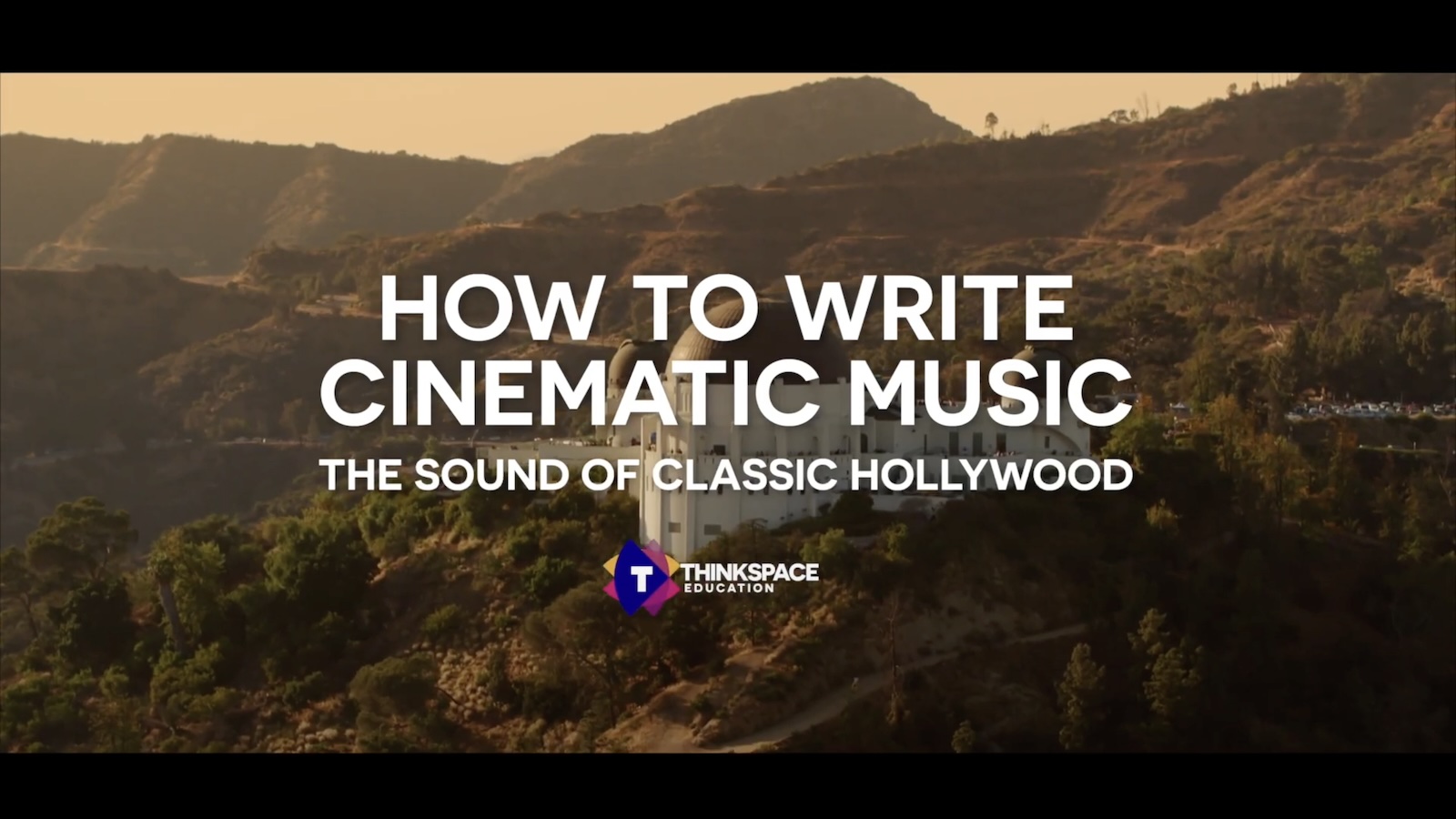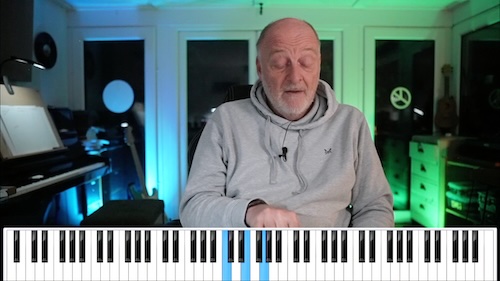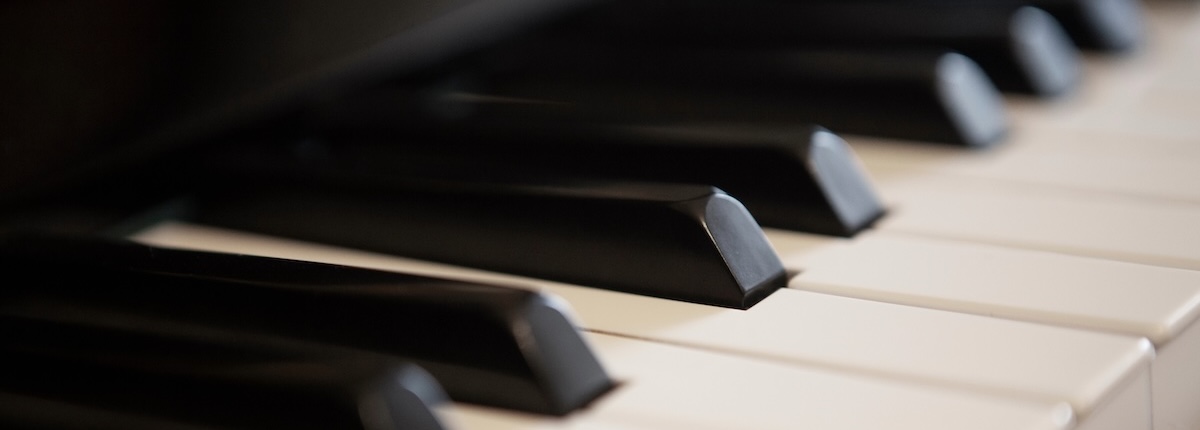
Practical Harmony Article
USING CHORD INVERSIONS TO ADD COLOUR
When you choose chords, you will often be thinking first about how they interact with the other elements of your music, such as the melody. However, there’s more subtle choices we can make that add colour to our music, and don't change the function that much. These can be incredibly effective nonetheless in adding variety and colour to your music, and will help you break away from the same old choices
In this article, we’re looking at using chord inversions, with a freeform scoring demonstration at the end that shows how you can use inversions when writing your own music. These videos and texts have been taken and adapted from our course Practical Harmony 1, so if you’re looking for a more in-depth look at inversions, as well as a host of other harmonic techniques, we recommend checking it out.
First, let’s look at Inversions and how they can be used to smooth transitions between chords.
using 1st inversions
One of the reasons we use inversions is to create smooth transitions between the individual notes of adjacent chords. This is known as voice leading, or part writing, and as a general rule it means that the notes of the chord take the fewest amount of steps when changing to the next chord (there is a lot to it but this definition will do for now).
For those of you who want a quick refresh of what a 1st inversion major chord looks like, see the images below:



For example, let’s imagine a two chord progression - C major to G major. If the C is in root position, then C will be in the bass. When the harmony changes to the G major, the bass note C doesn’t have to drop down to G. It could simply descend a scale step, just one semitone in this instance, to the note B natural, as B is part of the G major triad. B natural is the 3rd of G major, meaning that this would be a G major 1st inversion chord.
We could display this chord progression in Roman numerals as: I - Vb
Or using slash chords as this: C - G/B
This exact movement is very common, especially when the next chord in the sequence is a root position vi, in this case A minor. This allows for descending, stepwise motion in the bassline:
As Roman numerals: I - Vb - vi
As chords in C Major: C - G/B - Am
So, moving to a chord inversion can also allow for a sense of harmonic movement when there isn’t really a change in the underlying chord.
As well as voice leading considerations and harmonic rhythm, inversions of chords of course have a different quality to them when compared to root position chords. This qualitative difference is one you need to experience to appreciate, so get on your instrument or DAW and play around with them until you can clearly differentiate between root and 1st inversion chords.
using 2nd inversions



In regards to voice leading and smooth movement between chords, there are a couple of contexts in which 2nd inversion chords are likely to come up.
One such case is movement between I and IV; in the key of C major these are the chords C and F. A root position C major will have C in the bass, and as the note C is part of an F major triad, its 5th, this note can stay put when the harmony changes. This puts the 5th of the chord in the bass, meaning that the F chord is in 2nd inversion.
As Roman numerals: IVc - I
As chords in C major: F/C - C.
Another common case you might encounter, especially in a classical/traditional context, is the use of a 2nd inversion tonic chord immediately preceding the V chord, the dominant, at the end of a musical phrase. This requires a little more explanation.
The movement from V to I that concludes a musical phrase is known as a perfect cadence, and it has a very final and definitive quality to it. In a cadential progression that ultimately concludes with the chords V - I, the harmony preceding the V is often a 2nd inversion I chord. By having it in 2nd inversion, the same note can stay in the bass when the harmony changes to the V chord.
As Roman numerals: Ic - V - I
As chords in C major: C/G - G - C
putting it all together
In this video, Guy scores a complete piece of music using a wide range of harmonic techniques. You’ll find inversions used throughout here, but also a bunch of other harmonic colouring and functional techniques discussed throughout the full course.
Take a listen and see which ones you can hear as he writes. He will draw attention to them as he uses them, but being able to hear them yourself is crucial, so you know how to translate the music you hear in your head into the DAW, or into the score editor.
Practical Harmony Article
USING CHORD INVERSIONS FOR COLOUR
The chords you use will often be chosen first for their harmonic function, which changes the way our melodies and harmonies interact. However, there’s more subtle choices we can make that purely add colour to our music. These chords won’t necessarily change the harmonic function, but can be incredibly effective nonetheless in adding colour to your music and helping you break away from the same old choices.
In this blog we’re looking at using chord inversions, with a freeform scoring demonstration at the end that shows how you can use inversions when writing your own music. These videos and texts have been taken and adapted from our course Practical Harmony 1, so if you’re looking for a more in-depth look at inversions, as well as a host of other harmonic techniques, we recommend checking it out.
First, let’s look at Inversions and how they can be used to smooth transitions between chords.
using 1st inversions
One of the reasons we use inversions is to create smooth transitions between the individual notes of adjacent chords. This is known as voice leading, or part writing, and as a general rule it means that the notes of the chord take the fewest amount of steps when changing to the next chord (there is a lot to it but this definition will do for now).
For those of you who want a quick refresh of what a 1st inversion major chord looks like, see the images below:



For example, let’s imagine a two chord progression - C major to G major. If the C is in root position, then C will be in the bass. When the harmony changes to the G major, the bass note C doesn’t have to drop down to G. It could simply descend a scale step, just one semitone in this instance, to the note B natural, as B is part of the G major triad. B natural is the 3rd of G major, meaning that this would be a G major 1st inversion chord.
We could display this chord progression in Roman numerals as: I - Vb
Or using slash chords as this: C - G/B
This exact movement is very common, especially when the next chord in the sequence is a root position vi, in this case A minor. This allows for descending, stepwise motion in the bassline:
As Roman numerals: I - Vb - vi
As chords in C Major: C - G/B - Am
So, moving to a chord inversion can also allow for a sense of harmonic movement when there isn’t really a change in the underlying chord.
As well as voice leading considerations and harmonic rhythm, inversions of chords of course have a different quality to them when compared to root position chords. This qualitative difference is one you need to experience to appreciate, so get on your instrument or DAW and play around with them until you can clearly differentiate between root and 1st inversion chords.
using 2nd inversions



In regards to voice leading and smooth movement between chords, there are a couple of contexts in which 2nd inversion chords are likely to come up.
One such case is movement between I and IV; in the key of C major these are the chords C and F. A root position C major will have C in the bass, and as the note C is part of an F major triad, its 5th, this note can stay put when the harmony changes. This puts the 5th of the chord in the bass, meaning that the F chord is in 2nd inversion.
As Roman numerals: IVc - I
As chords in C major: F/C - C.
Another common case you might encounter, especially in a classical/traditional context, is the use of a 2nd inversion tonic chord immediately preceding the V chord, the dominant, at the end of a musical phrase. This requires a little more explanation.
The movement from V to I that concludes a musical phrase is known as a perfect cadence, and it has a very final and definitive quality to it. In a cadential progression that ultimately concludes with the chords V - I, the harmony preceding the V is often a 2nd inversion I chord. By having it in 2nd inversion, the same note can stay in the bass when the harmony changes to the V chord.
As Roman numerals: Ic - V - I
As chords in C major: C/G - G - C
putting it all together
In this video, Guy scores a complete piece of music using a wide range of harmonic techniques. You’ll find inversions used throughout here, but also a bunch of other harmonic colouring and functional techniques discussed throughout the full course.
Take a listen and see which ones you can hear as he writes. He will draw attention to them as he uses them, but being able to hear them yourself is crucial, so you know how to translate the music you hear in your head into the DAW, or into the score editor.

Updated December 2024
STUDENT SUCCESSES
At ThinkSpace Education, we equip our students with the skills to succeed, combining hands-on projects reflecting real industry demands with lessons from working professionals. From winning awards, to working on high-profile film, video game, and television projects, to touring with major artists, our alumni are excelling in the industry.

Luna Pan won both a Professional Development Award and the LIT Talent Award. She was also nominated for Emerging Composer of the Year at APRA AMCOS Screen Music Awards 2024 and two Hollywood Music in Media awards.
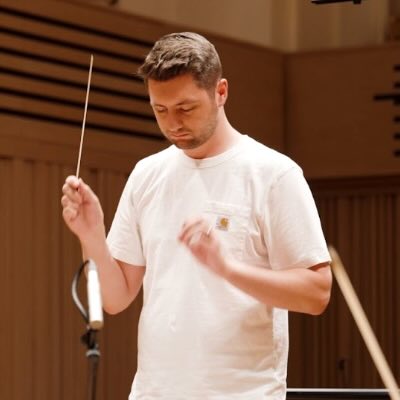
Sam Allen arranged strings for Snoop Dogg and Dr Dre at the Superbowl, and also did the string/additional programming for the American National Anthem at the NBA All-stars game.

Bill Lacey is Grammy Award-winning and Emmy-nominated mastering engineer, with works including Halo, Kidding, Penny Dreadful, Ray Donovan, Homeland, The First Lady, The Fourth Estate, Yellowjackets, and Billions.

Sarah Lutz has worked as an orchestrator on many high-profile projects, such as the Spider-man video game, Netflix’s Godless, and The Titan.

Matthias Weber won an Emmy for his work on “Expedition Bismarck”, directed by James Cameron and Gary Johnstone. He has also worked on Baywatch, The Sopranos, Pearl Harbor, and The League of Extraordinary Gentleman.

Joel Jossy received two awards at the Clef Music Awards 2024. Best Song and the Best Composer award in the Rock category.

Lucy Hackett was selected for the Prelude initiative by PRS and Amazon MGM Studios, and also had her composition The Moth performed at the London Piano Festival 2024.

Federico Solazzo has worked on It’s Nice in Here (Academy-award shortlisted) and Drops of Gold (Emmy-winning AppleTV+ series).

Andrew Kesler has worked on Grammy-nominated album FIFTY by The Manhattan Transfer, A Very Pentatonix Christmas, and America's Got Talent.

Ivan Eastley did the sound design and mix for BBC podcast series Crime Next Door - a true crime investigation about a murder-suicide in remote wales in the 1970s.

Matt Griggs’ team at SoundCaster Studios has won the UK Games Fund’s prototype grant and won Most Innovative Gameplay at GDLX. He was also a finalist for The Cue Tube’s Score Relief 2024 Competition.

Helen Noir is a Professor in the Electronic & Produced Music department at Guildhall School of Music & Drama, and resident composer and music director for The AIDS Play Project.

Mark Choi has been nominated twice for a Game Music Remix Award in 2021 and 2023, is a BAFTA Games Connect member and was also a 2023 BAFTA Games Awards juror for Audio Achievement.

Felipe Zenicola scored Luz, the first children’s series of Netflix Brazil, and is part of the band MOVE who was awarded best group of the year in Portugal by the Festa do Jazz festival.

Phoebe Hutchason earned a spot on the 100% Her Composer Mentorship Programme by Universal Production Music. She also scored Regency short film Until Today, which was nominated for Best British Short at the BAFTA-qualifying Iris Prize Film Festival and is streaming on Channel 4.
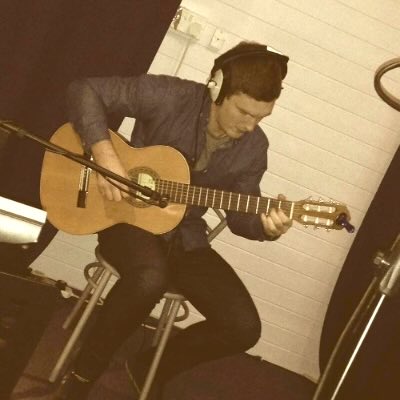
Richard Armstrong's music editing can be heard on Loki Season 2, Conclave, A Haunting in Venice, Expendables 4, Mission Impossible Dead Reckoning, and Oscar-winning Bohemian Rhapsody.

Christina Stanley-Webb is a sound designer for games and works at Kinetic Games.

Emily Hawkins was nominated for the European Talent Award at Soundtrack Cologne 2023. She also assisted at Berlinale in the live performance at the Honorary Golden Bear Award ceremony for Martin Scorsese.

Thor Bremer recorded percussion for the new Star Wars Outlaws game.

Jeremy Froböse became CTO of the game audio house AudioCreatures.

Xuesi Xu won Best Original Score for their work on a short film for the Seattle 48 Hour Horror Film Project.


Jake Bloor's work was featured on a commercial for the National Geographic.

Glen Wagstaff is a sound designer at Grinding Gear Games, and has also composed scores for various film projects, including "Salween Stories - Mae Sam Laep” (2017) and "Mutt" (2021), an Australian independent feature film.

Brendon Varcoe won Best Original Score at the Top of The South Film Festival.

Maria Lui was accepted onto the ‘Elev-8’ Program and the ‘Composing for TV, Film and Advertising’ program sponsored by ESPN and delivered through Women’s Audio Mission.

Johann Grillenbeck won the European Talent Award at Soundtrack Cologne 2023.

Curtis Heath is a composer who has worked on over 50 films, including over 10 feature films. He has also collaborated with musicians such as Leon Bridges, the Lumineers, Wayne Kramer, Jandek, and Ozomatli.

Matt Jorgensen is an Emmy winner and has worked on a range of media projects. He is a founder and co-Artistic Director of the Ballard Jazz Festival.

Brian Kelly’s work can be heard on Disney+, PS5, Xbox, Amazon Prime Video and the BBC.

Calvin Smith works at Pitstop Productions as an Audio Production Coordinator.

Jack Cotter is a Senior Sound Designer for games, and works at Wushu Studios.
Practical Harmony 1
A THINKSPACE INTERACTIVE COURSE
SAVE 30%
$119
Save over 50% when you buy in The Cinematic Bundle. Limited-time offer.
Introductory Offer: Save 30%, plus get access to a free live harmony webinar and Q&A.
Expand your harmonic vocabulary to express your ideas
If you’re a composer, songwriter, or performing musician, this course will transform your harmonic vocabulary, allowing you to express your ideas like never before.
You’ll gain fluency in chords and progressions, learn how to use chords to elevate melodies, write and play more eloquently, and much more. This hands-on journey takes you from basic triads right through to suspensions, 6th and 7th chords, and more – while providing plenty of fun ways to practice your new skills along the way.
want to learn a different daw?

